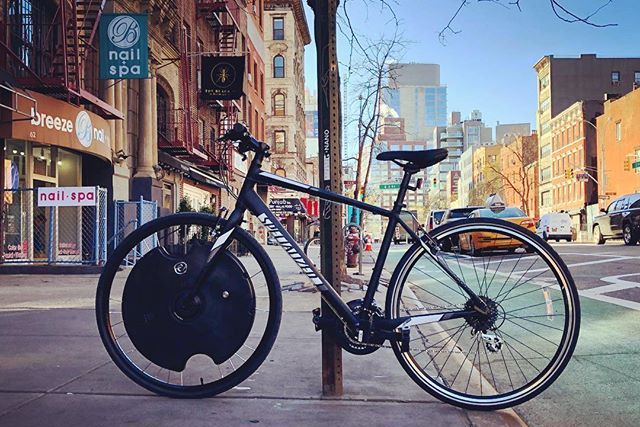
It’s all part of a publicity stunt by Google, which is showcasing its new Google Assistant integration with the Electron Wheel at the big expo in January.
The Electron Wheel promises to “electrify your bike in 30 seconds,” by just replacing your front wheel. It includes such features as active hill assist, a top speed of 20 mph on full-assist mode, a range of 50 miles, and a 400-watt motor powered by lithium ion batteries.
Google Assistant adds a host of new features, letting you talk to the bike and access all the information in the Electron Wheel app. In addition to basic navigation, you can record your ride, alter the assist level of the wheel, and monitor vital signs such as battery life.
James Parker of Electron told TechCrunch that voice commands and bicycle riding seemed like a natural fit. “It’s really made us excited about how to make the user experience as simple as possible and how voice technology can be integrated while riding,” he said. “There’s all of this nice command technology in cars. We think there’s so much opportunity to use that technology while riding a bike.”
Lippe will leave Union Square in New York on December 31 and arrive on the Vegas strip 10 days later, if all goes according to plan. According to the Ride to CES website, where you can follow his journey, that’s more than 2,800 miles, with an electricity cost of $4.76.
With plans to ride about 17 hours each day, Lippe will be escorted by a van with six wheels onboard, ensuring that he has a freshly charged wheel every 50 miles or so.
The second-generation Electron Wheel is now available online for $799 pre-order (700c or 26-inch), with expected delivery in February. The main components are the wheel cover for the bike’s front wheel and a wireless pedal sensor. Google Assistant functionality may not be available at launch, but will likely follow soon after.
While we won’t be biking cross-country to get there, Digital Trends will have all the sights and sounds direct from CES in Las Vegas.


